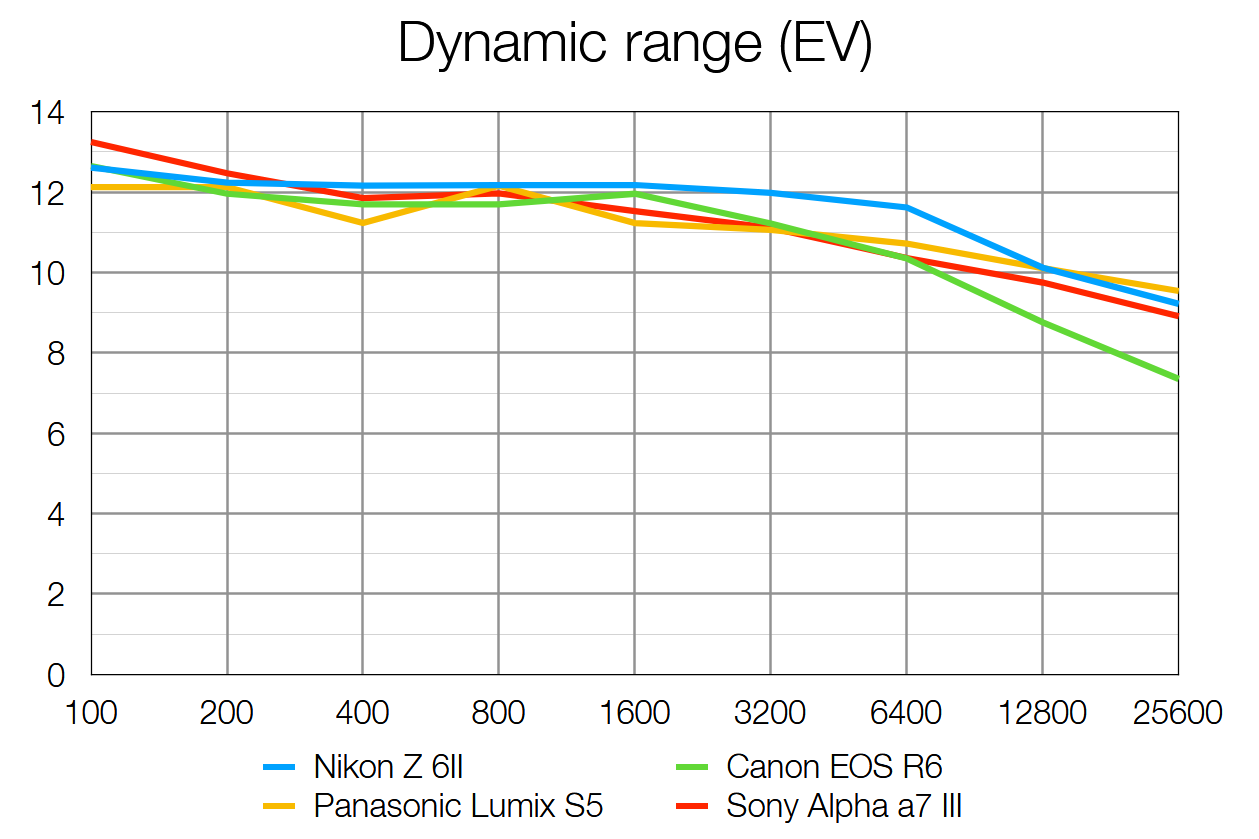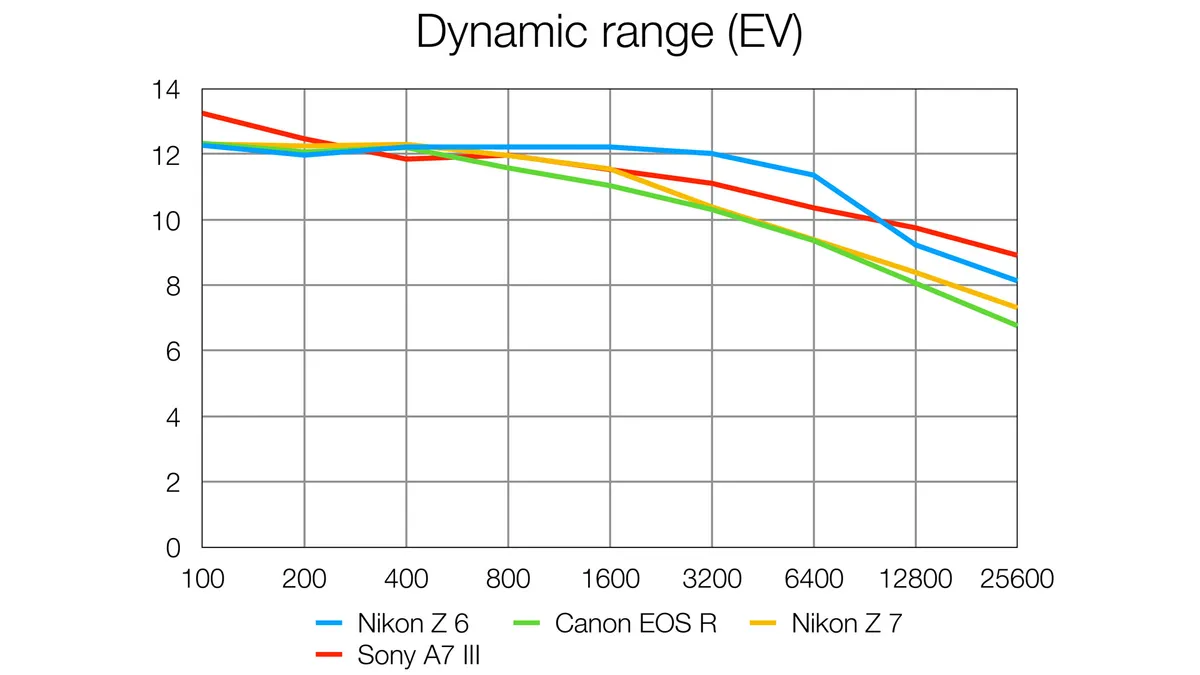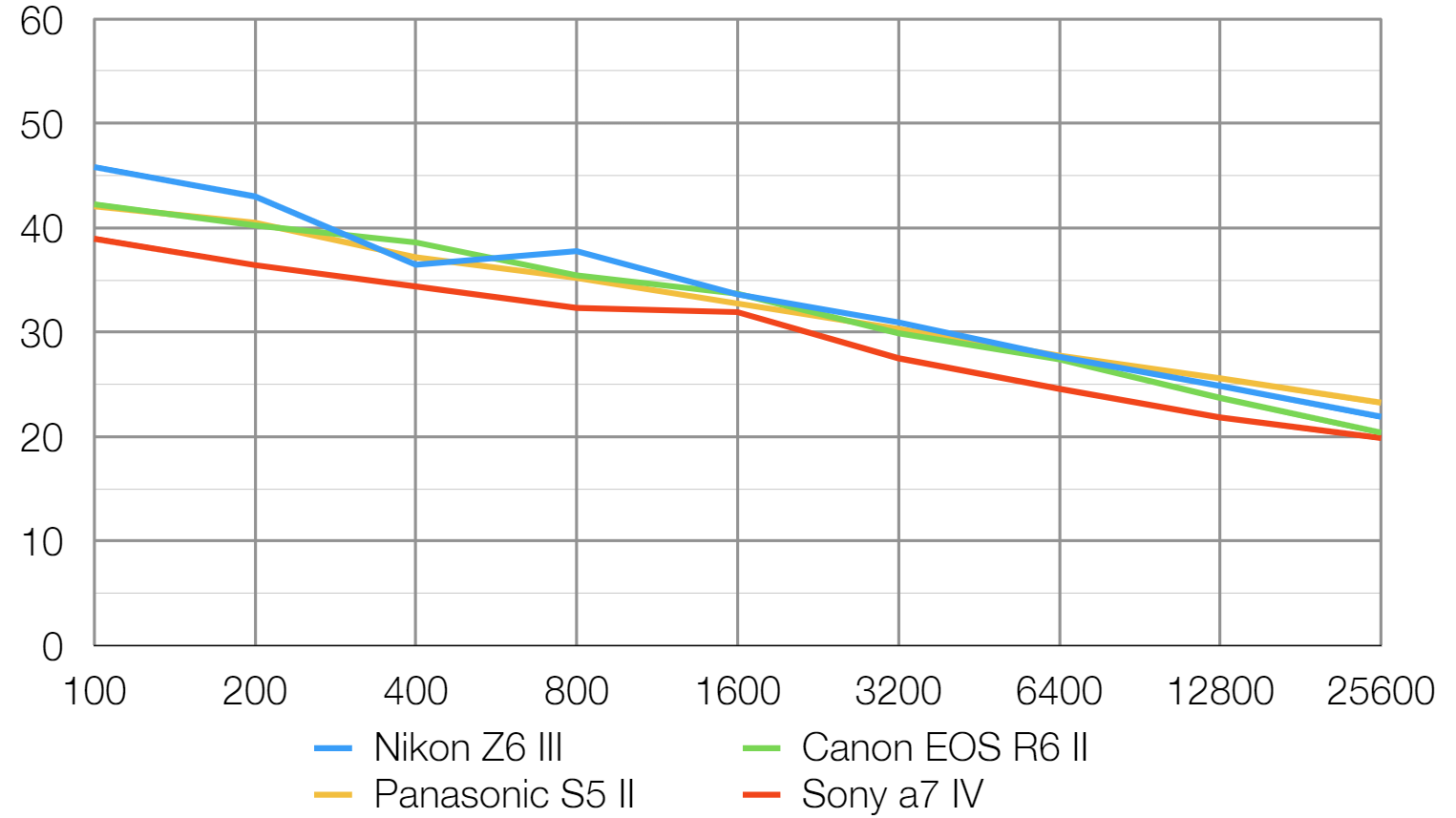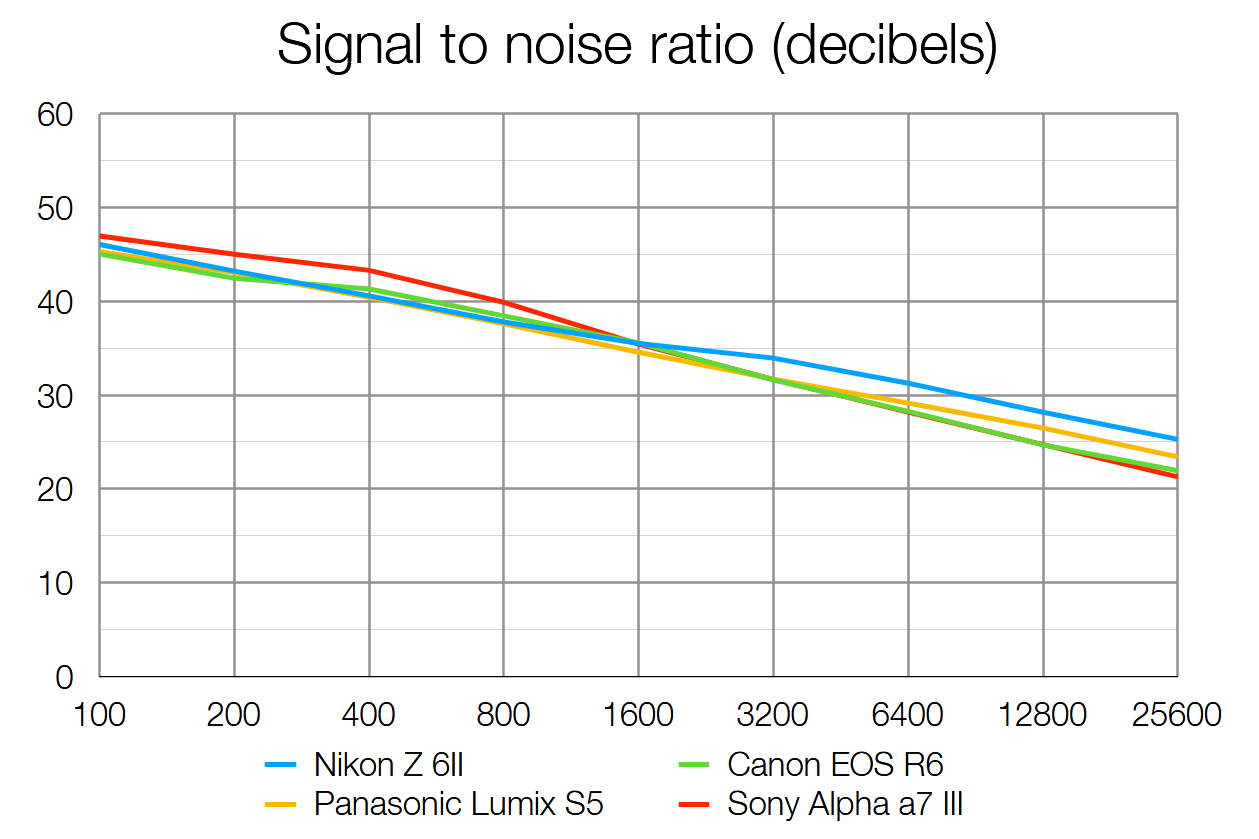For people who cares about camera sensors' technical performance, it's well known that photographic dynamic range (PDR) for Z6III from Photons to Photos:

It shows that Z6III's PDR not only lower than Z6II and ancient D600(by a full stop) , but even catch up by non-BSI APS-C camera Z50! This seems a bit odd to me, so I tried to find another sensor measurement on internet, unfortunately there is very few data out there, I'll start from DigitalCameraWorld (DCW)'s measurement:



Nikon Z6

Nikon Z50
It shows very little DR difference between Z6III and Z6II, and definitely higher than Z50.
Same with signal-to-noise ratio (SNR):


Again, very little difference.
Next is measurements from RTINGS:

Nikon Z6III

Nikon Z6II
It tells a similar story as Photons to Photos, with less difference between Z6III and Z6II, down to 0.4EV.
Next is review from Youtuber Gerald Undone, he is measuring N-RAW video at ISO800 so I expect the PDR performance should lower than RAW photo at ISO100. Also he is the only review that specify the measurement tools and full analysis data.

I don't know how to interpret imatest data but if we look at Slope-based DR at 1.0 it shows 11.4 EV.
For now, we got many dynamic range data, with different measuring method, software and standard, at this point I don't know what to rely on. A properly conducted measurement should list all equipment that used in, include test target, mathematical and electrical standard, analyzing software and configuration, etc. Only a Youtuber done that, thought his measurements are for video.
Also many reviewers underexposed the photo and pull back using software like LrC, show that Z6III indeed has more noise than Z6II, but in my opinion they are not comparing DR between camera, but more like comparing SNR, because more noise doesn't mean it lost the darkest details, in many fields the dynamic range can be greater than SNR. Also the RAW files of modern cameras are not really that "RAW" in many ways, some with noise reduction already in it (such as Canon and Sony), internal calibrations, and almost all have PDAF and dead pixel interpolation, all make sensor performance measurement more complicated, even I think only the manufacturer itself know the real performance data of their sensors.
After all, my point is simple: modern FF cameras already have good enough performance, and vast majority of photographers just don't care about those technical data. We have many more factors to consider when choosing a camera, such as autofocus, ergonomics, price and lens support. I admit I was a bit concern about Z6III's DR, but after research above I'll just buy it to replace X-S20 and have a good sleep.

It shows that Z6III's PDR not only lower than Z6II and ancient D600(by a full stop) , but even catch up by non-BSI APS-C camera Z50! This seems a bit odd to me, so I tried to find another sensor measurement on internet, unfortunately there is very few data out there, I'll start from DigitalCameraWorld (DCW)'s measurement:



Nikon Z6

Nikon Z50
It shows very little DR difference between Z6III and Z6II, and definitely higher than Z50.
Same with signal-to-noise ratio (SNR):


Again, very little difference.
Next is measurements from RTINGS:

Nikon Z6III

Nikon Z6II
It tells a similar story as Photons to Photos, with less difference between Z6III and Z6II, down to 0.4EV.
Next is review from Youtuber Gerald Undone, he is measuring N-RAW video at ISO800 so I expect the PDR performance should lower than RAW photo at ISO100. Also he is the only review that specify the measurement tools and full analysis data.

I don't know how to interpret imatest data but if we look at Slope-based DR at 1.0 it shows 11.4 EV.
For now, we got many dynamic range data, with different measuring method, software and standard, at this point I don't know what to rely on. A properly conducted measurement should list all equipment that used in, include test target, mathematical and electrical standard, analyzing software and configuration, etc. Only a Youtuber done that, thought his measurements are for video.
Also many reviewers underexposed the photo and pull back using software like LrC, show that Z6III indeed has more noise than Z6II, but in my opinion they are not comparing DR between camera, but more like comparing SNR, because more noise doesn't mean it lost the darkest details, in many fields the dynamic range can be greater than SNR. Also the RAW files of modern cameras are not really that "RAW" in many ways, some with noise reduction already in it (such as Canon and Sony), internal calibrations, and almost all have PDAF and dead pixel interpolation, all make sensor performance measurement more complicated, even I think only the manufacturer itself know the real performance data of their sensors.
After all, my point is simple: modern FF cameras already have good enough performance, and vast majority of photographers just don't care about those technical data. We have many more factors to consider when choosing a camera, such as autofocus, ergonomics, price and lens support. I admit I was a bit concern about Z6III's DR, but after research above I'll just buy it to replace X-S20 and have a good sleep.







